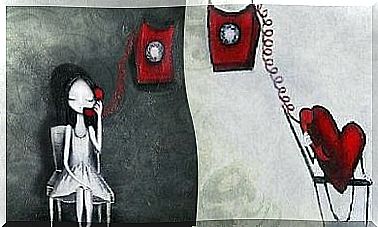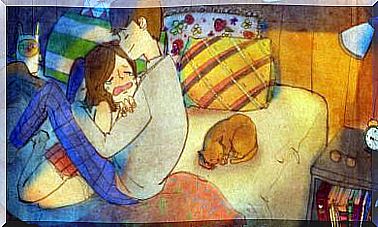House, Tree, Person: The Personality Test (HTP)

The personality test or HTP (for the acronym in English) allows us to analyze certain characteristics of our own, which are the areas that are in conflict within us, the feelings we have and the projection of ourselves, that is, what we consider as own and somehow we place outside of ourselves.
This test may seem like “child’s play”, but it also helps adults. It is developed both in the clinics and in the psychological consultation and in the psychopedagogical offices of the schools.
What is the personality test?
In order to carry out this test , the subjects are asked to draw a house, a tree and a person on a white sheet. That is why the acronym in English is HTP. That is: House (house), Tree (tree) and Person (Person).
In addition, thanks to the drawings of these simple everyday objects, the one who analyzes them can verify elements of the personality of the individual in question. Although we do not realize it, when drawing a house, a tree and a person we bring out elements that are stored in the unconscious for various reasons.
It is not necessary to be a Picasso or a Dalí to pass the test, but rather to find the keys that the drawing offers. What can be communicated through it? Specifically, it serves to express the “I” in relation to a family environment (such as a house or a tree) and close people.
These tests are also known as projective tests, in this case, expressive projective tests. These are tests that come from a psychoanalytic aspect in which the execution of these tests involves projecting one’s own inner situation.
Martínez and Sarlé (2007) point out that “projective tests aim to explore the personality or some specific aspect of it in its relationship to the global context, but with the clear purpose of reaching the deepest levels of it, including the unconscious “ . The authors also highlight that “they reveal the position of the person with respect to the surrounding world, social events, their attitude in difficult life situations or their moral behavior . “

The two phases of the HTP test
The study goes beyond drawing a house with a tree and a person next to it. Therefore, it should not be taken lightly. In the first instance (non-verbal or creative) is when the patient is asked to draw the drawings of these 3 elements.
The expert is likely to suggest that you draw in the most natural way possible, forgetting as much as possible the context in which you find yourself and the subsequent analysis of the drawing itself.
While the person is drawing, the analyst takes the opportunity to pay attention to their attitudes, words and everything that they demonstrate. It can be frustration, anger, joy, or any other emotion.
Once “homework” is done, it’s time for the next stage. In this second phase, he has to tell a story, using the three main verb tenses (the past, the present and the future).
Another option, very frequent also during the HTP test, is to answer a series of questions, already established in advance by the specialist. This serves to motivate in some way people who have a harder time expressing themselves or children who do not yet have the ability to make a story or a tale.
How, when and where of the HTP test

This test is designed for people over 8 years old and there is no maximum age to carry it out. Anyone can “submit” to draw a house, a tree and a subject and then be analyzed.
Perhaps for adults it is a bit strange to go to the consultation with the analyst and that he asks him to draw in the middle of the session, but the results obtained are interesting. To be able to take full advantage, it is necessary to be in a quiet place, without distractions, where the patient feels comfortable. The office is ideal because it also provides privacy.
At the same time, it is necessary to provide all the necessary materials: sheets, pencils and eraser. It is allowed to erase, but taking into account the attitude taken towards this action : if once the drawing is finished it is decided to erase it completely, it is not the same as removing only a part of the stroke, what you want to improve.
The HTP test lasts approximately between half and an hour, depending on how long it takes the patient to draw and tell the story. Of course, it will also depend on your predisposition and whether the analyst has decided to ask questions at the end.
What is the HTP test for?

The logic is simple. The personality test is based on the belief that many feelings, whether past or present, can be expressed thanks to drawings, as well as future desires .
Each image means something different : the house projects the present family situation, the tree is the deepest or inner concept of ourselves and the person is a kind of self-portrait or self-image that includes our consciousness and our defense mechanisms.
The location of each object on the sheet is also analyzed. For example, if you draw very close to the upper edge, the drawing is related to dreams and imagination, and the lower edge to the material. What is captured on the right is linked to the future, in the center to the present and to the left to the past.
Each item’s size, stroke (which can signify firmness or weakness), and clarity are evaluated. It is also very interesting to understand that each part of the house, the tree and the person has a meaning.
We will not tell you what each one means so that you do not cheat in the case of taking the personality test, but to give a small sketch of a possible interpretation: the roof of the house represents the spiritual and the intellectual ; the trunk of the tree the support of life and the hands of the subject the affective plane.
In this personality test, like all projective tests, the quality of the information obtained will depend on the attitude with which we face the task of drawing or constructing a story, but it will also depend a lot on the skill of the analyst. to differentiate the relevant elements from those that are not.









